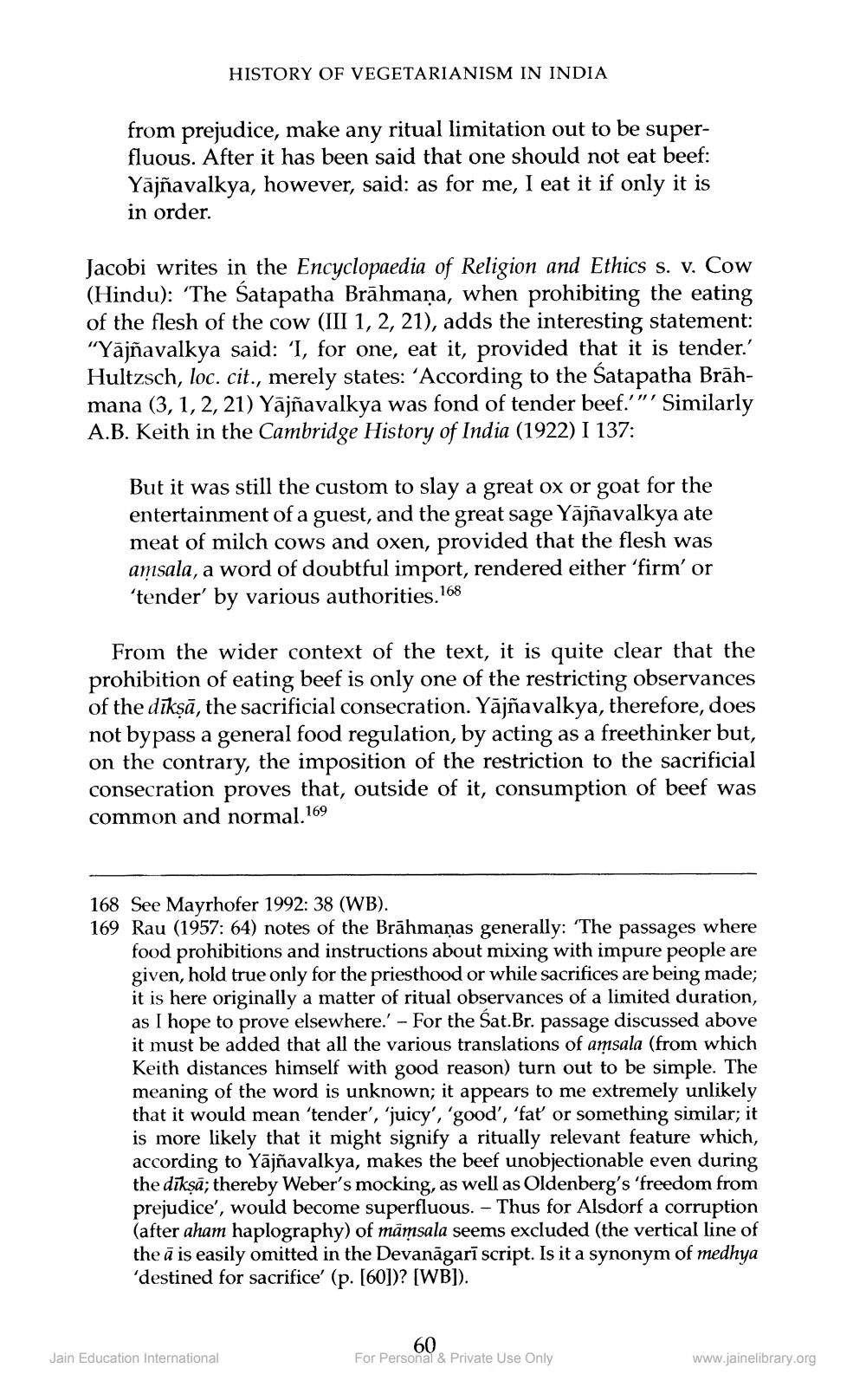________________
HISTORY OF VEGETARIANISM IN INDIA
from prejudice, make any ritual limitation out to be superfluous. After it has been said that one should not eat beef: Yājñavalkya, however, said: as for me, I eat it if only it is in order.
Jacobi writes in the Encyclopaedia of Religion and Ethics s. v. Cow (Hindu): "The Satapatha Brāhmaṇa, when prohibiting the eating of the flesh of the cow (III 1, 2, 21), adds the interesting statement: "Yājñavalkya said: 'I, for one, eat it, provided that it is tender.' Hultzsch, loc. cit., merely states: 'According to the Satapatha Brāhmana (3, 1, 2, 21) Yājñavalkya was fond of tender beef.'"' Similarly A.B. Keith in the Camb
of India (1922) I 137:
. 1.nado
oridge
But it was still the custom to slay a great ox or goat for the entertainment of a guest, and the great sage Yājñavalkya ate meat of milch cows and oxen, provided that the flesh was amsala, a word of doubtful import, rendered either 'firm' or ‘tender' by various authorities. 168
From the wider context of the text, it is quite clear that the prohibition of eating beef is only one of the restricting observances of the dīkņā, the sacrificial consecration. Yājñavalkya, therefore, does not bypass a general food regulation, by acting as a freethinker but, on the contrary, the imposition of the restriction to the sacrificial consecration proves that, outside of it, consumption of beef was common and normal.169
168 See Mayrhofer 1992: 38 (WB). 169 Rau (1957: 64) notes of the Brāhmaṇas generally: 'The passages where
food prohibitions and instructions about mixing with impure people are given, hold true only for the priesthood or while sacrifices are being made; it is here originally a matter of ritual observances of a limited duration, as I hope to prove elsewhere.' - For the Sat.Br. passage discussed above it must be added that all the various translations of amsala (from which Keith distances himself with good reason) turn out to be simple. The meaning of the word is unknown; it appears to me extremely unlikely that it would mean 'tender', 'juicy', 'good', 'fať or something similar; it is more likely that it might signify a ritually relevant feature which, according to Yājñavalkya, makes the beef unobjectionable even during the dīksā; thereby Weber's mocking, as well as Oldenberg's 'freedom from prejudice', would become superfluous. - Thus for Alsdorf a corruption (after aham haplography) of māmsala seems excluded (the vertical line of the ā is easily omitted in the Devanāgarī script. Is it a synonym of medhya 'destined for sacrifice' (p. [60])? (WB]).
Jain Education International
60 For Personal & Private Use Only
www.jainelibrary.org




